- Benefits of Fertilising Indoor Plants
- 1. Improved Growth
- 2. Increased Flowering and Fruiting
- 3. Enhanced Leaf Color and Texture
- 4. Stronger Resistance to Diseases and Pests
- 5. Longer Lifespan
- 6. Overall Plant Health and Well-being
- Choosing the Right Fertiliser for Indoor Plants
- 1. Nutrient Content
- 2. Plant Type
- 3. Slow-Release vs. Liquid Fertilisers
- 4. Organic vs. Synthetic Fertilisers
- 5. Application Method
- 6. Price and Availability
- Understanding Fertiliser Labels for Indoor Plants
- When and How Often to Fertilise Indoor Plants
- Frequency of Fertilising
- Signs That Your Indoor Plants Need Fertilising
- How to Fertilise Indoor Plants
- Proper Technique for Applying Fertiliser to Indoor Plants
- 1. Read the instructions
- 2. Dilute liquid fertilisers
- 3. Apply evenly
- 4. Avoid foliage contact
- 5. Water after application
- 6. Follow a schedule
- 7. Monitor your plants
- Signs of Over- and Under-Fertilising Indoor Plants
- Signs of Over-Fertilising
- Signs of Under-Fertilising
- Troubleshooting Common Fertilising Problems with Indoor Plants
- Alternative Methods for Nourishing Indoor Plants
- 1. Compost
- 2. Vermicomposting
- 3. Liquid fertilisers
- 4. Organic soil amendments
- 5. Plant-based fertilisers
- 6. Homemade fertilisers
- Q&A:
- What kind of fertiliser should I use for my indoor plants?
- How often should I fertilise my indoor plants?
- What are the signs that my indoor plants need fertilising?
- Can I use the same fertiliser for all my indoor plants?
- Can I use homemade fertilisers for my indoor plants?
- What are the benefits of fertilising indoor plants?
- Are there any risks or dangers associated with over-fertilising indoor plants?
- Video: This Fertilizer Is My SECRET WEAPON For A Healthy Productive Garden!
Indoor plants are a wonderful addition to any home or office space. They not only add beauty and freshen the air, but they also require proper care and attention to thrive. One essential aspect of caring for indoor plants is fertilising them regularly. Fertilisers provide the necessary nutrients for plants to grow and stay healthy. In this complete guide, we will take you through some essential tips and techniques to help you fertilise your indoor plants effectively.
First and foremost, it is important to understand the needs of your specific indoor plants. Different plants have different requirements when it comes to fertilisation. Some plants may prefer a liquid fertiliser, while others may benefit from slow-release pellets. Determine the type of indoor plants you have and research their specific fertilisation needs. This will ensure that you are providing the right nutrients in the right quantities, avoiding over or under-fertilisation.
Timing is also crucial when it comes to fertilising indoor plants. Generally, plants should be fertilised during their active growing season, which is usually in the spring and summer months. Avoid fertilising during the dormant season, as it can lead to nutrient build-up in the soil. Additionally, make sure to follow the instructions on the fertiliser packaging and never exceed the recommended dosage. Over-fertilisation can cause damage to the plant’s roots and result in stunted growth.
Finally, don’t overlook the importance of nutrient balance. Indoor plants require a balanced combination of nitrogen, phosphorus, and potassium, often referred to as NPK. Nitrogen promotes leafy growth, phosphorus helps with root development, and potassium aids in overall plant health and disease resistance. Look for fertilisers with a balanced NPK ratio or adjust the ratio based on your plant’s specific needs. Regularly monitoring your plants’ health and adjusting the fertiliser accordingly will help ensure optimal growth and longevity.
Remember: Fertilising your indoor plants is a vital part of their care routine. By understanding your plants’ needs, timing the fertilisation right, and maintaining a nutrient-balanced approach, you can provide the best environment for your indoor plants to flourish and thrive. Happy fertilising!
Benefits of Fertilising Indoor Plants
Fertilising indoor plants is an essential part of their care routine. While plants can survive in a pot with basic soil, providing them with proper nutrients through fertilisers can significantly enhance their growth and overall health. Here are some of the key benefits of fertilising indoor plants:
1. Improved Growth
Indoor plants require a balanced combination of essential nutrients for optimal growth. Fertilisers provide these nutrients, such as nitrogen (N), phosphorus (P), and potassium (K), in the right proportions. This promotes healthy root development, leaf formation, and overall plant growth.
2. Increased Flowering and Fruiting
Fertilisers with higher levels of phosphorus (P) can encourage indoor plants to produce more flowers and fruits. Phosphorus is essential for flower and fruit formation, and regular fertilisation can ensure that your plants bloom and bear fruits to their fullest potential.
3. Enhanced Leaf Color and Texture
Indoor plants that receive proper fertilisation often have vibrant leaf colors and a lush, healthy appearance. Fertilisers contain trace elements such as iron, magnesium, and manganese, which are essential for maintaining the green color and texture of leaves. These nutrients also help prevent yellowing or browning of leaves.
4. Stronger Resistance to Diseases and Pests
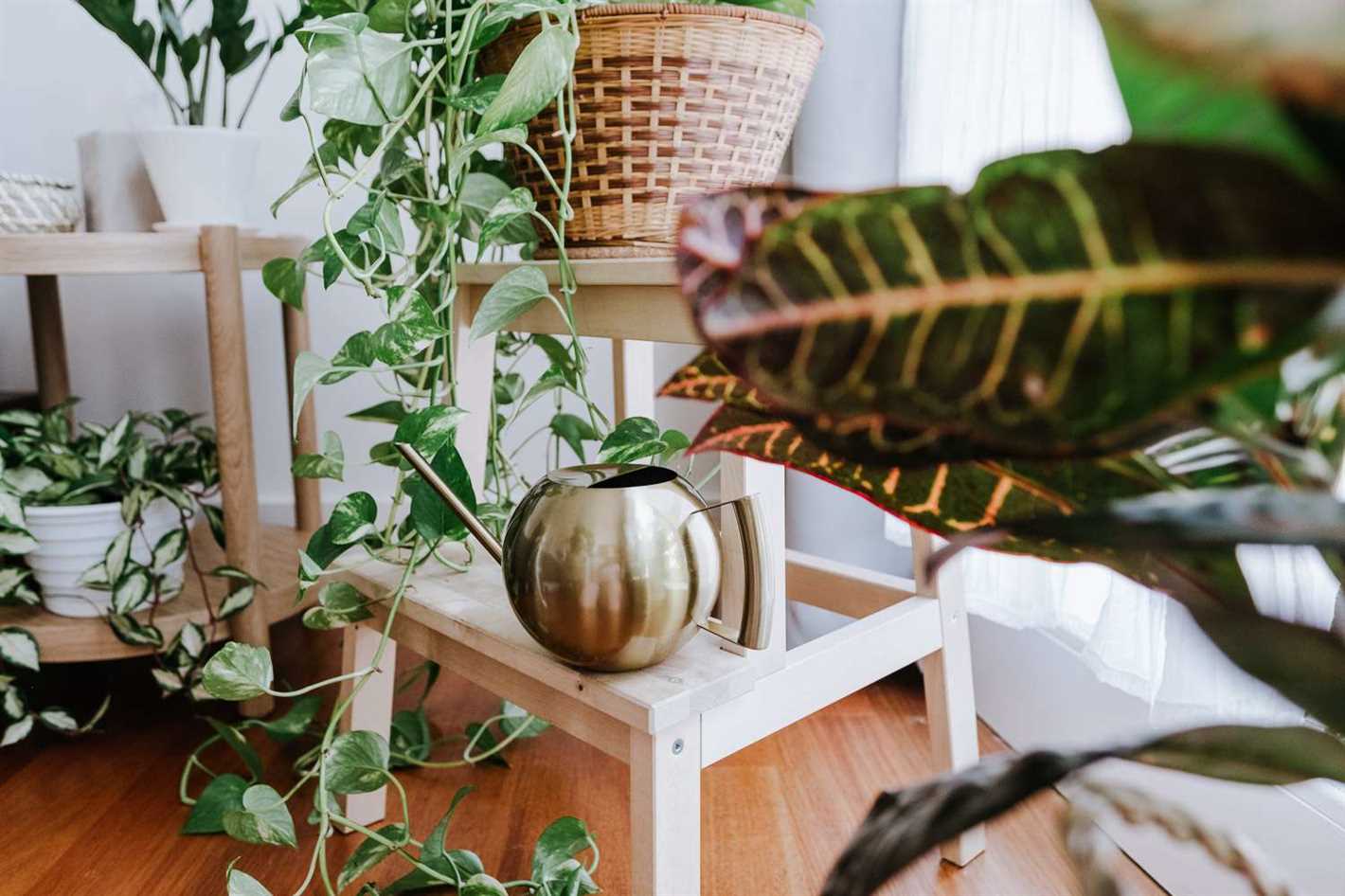
Healthy, well-fertilised indoor plants are generally more resistant to diseases and pests. Fertilisers strengthen the plant’s immune system by providing the necessary nutrients for building a strong defense mechanism. This helps the plants ward off common pests and diseases, ensuring their longevity.
5. Longer Lifespan
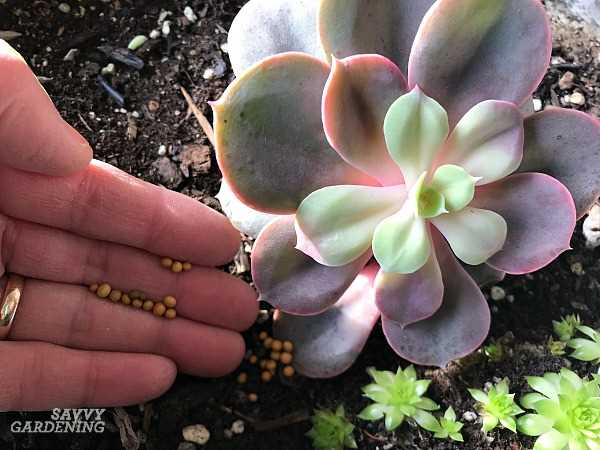
Regular fertilisation provides indoor plants with the necessary nutrients they need to thrive. This can extend their lifespan and keep them healthy for a longer period of time. Fertilisers replenish the nutrients that may become depleted over time, ensuring that the plant remains vigorous and continues to flourish.
6. Overall Plant Health and Well-being
Fertilising indoor plants is vital for maintaining their overall health and well-being. Providing the necessary nutrients through fertilisers not only supports the plants’ growth but also helps them develop strong roots, robust stems, and lush foliage. This ensures that your indoor plants remain beautiful, lively, and vibrant.
Remember to always follow the recommended dosage instructions on your particular fertiliser product to avoid over-fertilisation, which can harm the plants. Different plant species may have varying fertiliser requirements, so it’s important to research and understand the specific needs of your indoor plants. Happy fertilising!
Choosing the Right Fertiliser for Indoor Plants
Proper fertilisation is essential for the health and growth of your indoor plants. Choosing the right fertiliser is crucial to ensure that your plants receive the necessary nutrients for optimal growth. Here are some factors to consider when selecting fertiliser for your indoor plants:
1. Nutrient Content
Different plants have different nutrient requirements. Before purchasing fertiliser, determine the specific nutrient needs of your indoor plants. Look for fertilisers that have balanced nutrient content, such as nitrogen (N), phosphorus (P), and potassium (K). These three main nutrients are typically represented by three numbers on the fertiliser packaging (e.g., 10-10-10).
2. Plant Type
Consider the type of plants you have when choosing fertiliser. Some plants, like orchids or succulents, have specific fertiliser requirements. Orchids often require a specialised orchid fertiliser that provides the necessary nutrients without damaging the sensitive roots, while succulents may benefit from a fertiliser with lower nitrogen levels to avoid excessive leaf growth.
3. Slow-Release vs. Liquid Fertilisers
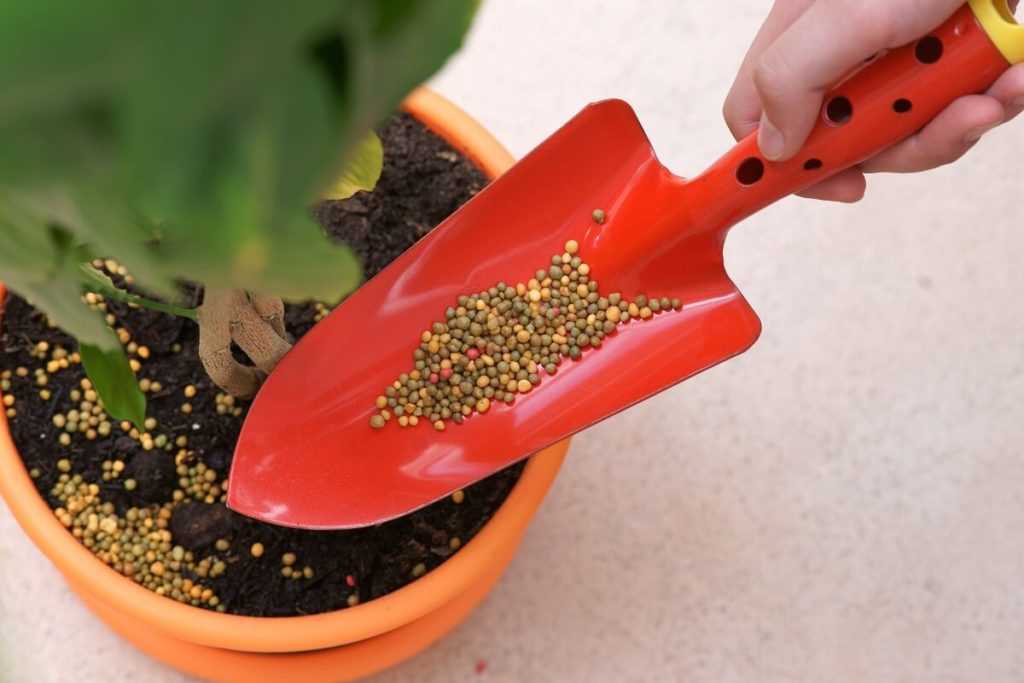
There are two main types of fertilisers: slow-release and liquid. Slow-release fertilisers are formulated to gradually release nutrients over an extended period, reducing the risk of over-fertilisation. Liquid fertilisers, on the other hand, are quickly absorbed by the plants and provide an immediate nutrient boost. Consider your schedule and the needs of your plants to determine which type of fertiliser is best for you.
4. Organic vs. Synthetic Fertilisers
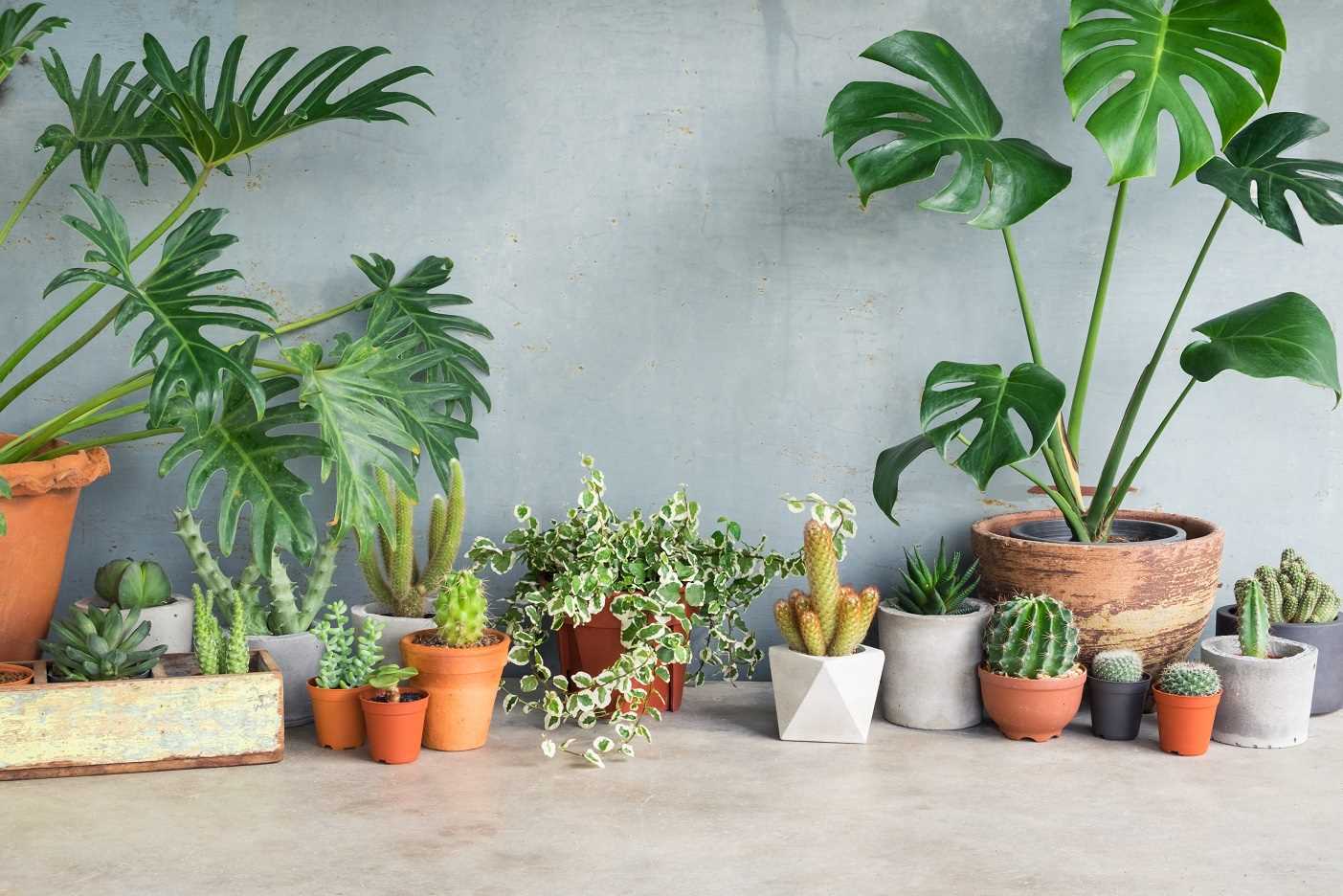
Another factor to consider is whether to use organic or synthetic fertilisers. Organic fertilisers are made from natural materials, such as compost or animal manure, and provide slow-release nutrients. They are generally considered more environmentally friendly but may have a milder effect. Synthetic fertilisers are chemically formulated and provide an immediate nutrient boost. They are often more concentrated and can result in faster growth, but may carry a higher risk of over-fertilisation.
5. Application Method
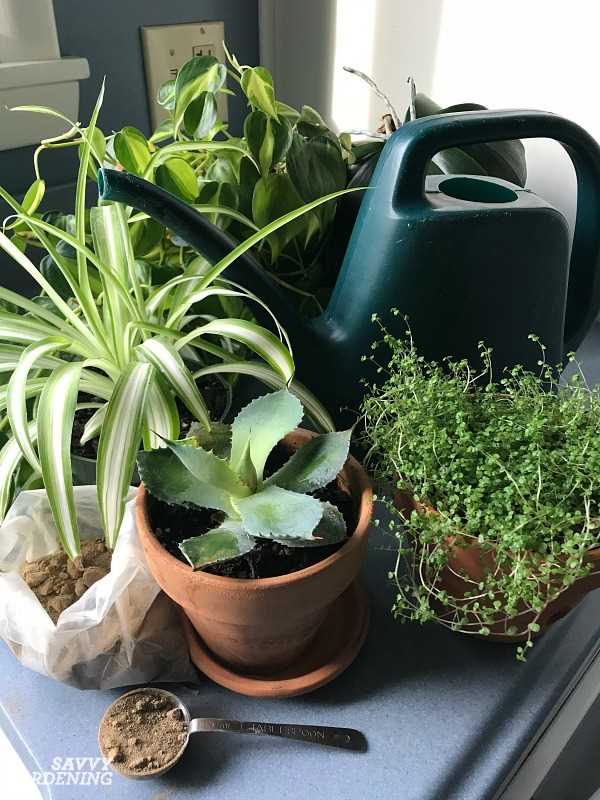
Consider the application method that suits your needs and preferences. Some fertilisers are designed to be mixed into the potting soil during planting, while others are applied as liquid solutions or granules to the soil surface. Choose a fertiliser and application method that aligns with your gardening style.
6. Price and Availability
Lastly, consider the price and availability of the fertiliser. Choose a fertiliser that fits your budget while still meeting the nutrient requirements of your plants. Additionally, ensure that the fertiliser is easily accessible whenever you need to replenish your supply.
By considering these factors when choosing a fertiliser for your indoor plants, you can provide them with the necessary nutrients for healthy growth and ensure their overall well-being.
Understanding Fertiliser Labels for Indoor Plants
Choosing the right fertiliser for your indoor plants can be overwhelming, especially when faced with a variety of options at the garden store. One way to make the process easier is to understand how to read the labels on fertiliser packaging. Here are some key elements to look for:
N-P-K Ratio: The N-P-K ratio, also known as the fertilizer analysis, is a set of numbers that represent the percentage of nitrogen (N), phosphorus (P), and potassium (K) in the fertiliser. For example, a 10-10-10 ratio means the fertiliser contains 10% nitrogen, 10% phosphorus, and 10% potassium. It is important to choose a ratio that meets the specific needs of your indoor plants.
Water-Soluble or Slow-Release: Fertilisers can be either water-soluble or slow-release. Water-soluble fertilisers are dissolved in water before being applied to the plants. They provide an immediate nutrient boost but may require more frequent applications. On the other hand, slow-release fertilisers release nutrients gradually over time, reducing the need for frequent applications. Consider which type of fertiliser suits your schedule and the needs of your indoor plants.
Micro and Macro Nutrients: Fertilisers may contain both micro and macro nutrients. Macro nutrients are required by plants in larger quantities, such as nitrogen, phosphorus, and potassium. Micro nutrients, on the other hand, are needed in smaller amounts but are still essential for plant growth. These may include iron, manganese, and zinc, among others. Check the label to ensure the fertiliser contains a balanced mix of essential nutrients for your indoor plants.
Application Rates: The label will provide instructions on how much fertiliser to use per plant or per square foot. It is important to follow these guidelines to avoid over or under-fertilising your indoor plants. Using too much fertiliser can lead to nutrient burn, while using too little may result in nutrient deficiencies. Take note of the recommended application rates and adjust as needed based on the specific requirements of your plants.
Organic or Synthetic: Fertilisers can be either organic or synthetic. Organic fertilisers are derived from natural sources, such as compost or animal manure. They are usually slower to release nutrients but provide long-term benefits to the soil. Synthetic fertilisers, on the other hand, are made from chemical compounds and provide nutrients more quickly. Consider your personal preferences and the needs of your indoor plants when choosing between organic and synthetic fertilisers.
By understanding fertiliser labels, you can make informed choices and provide your indoor plants with the nutrients they need for healthy growth. Remember to always read and follow the instructions on the packaging for best results.
When and How Often to Fertilise Indoor Plants
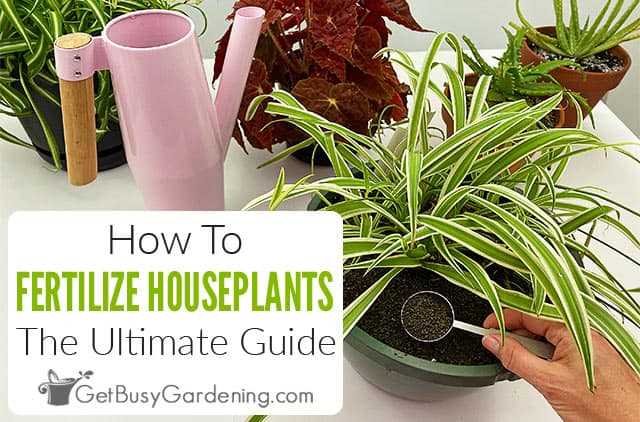
Fertilising indoor plants is an important aspect of their care, as it provides them with essential nutrients they need to thrive. However, it is essential to know when and how often to fertilise your indoor plants to avoid overfeeding or underfeeding them.
Frequency of Fertilising
The frequency of fertilising your indoor plants depends on several factors, including the specific type of plant, its growth stage, and the type of fertiliser you are using. In general, most indoor plants benefit from regular fertilisation during the growing season, which is typically spring and summer. During this period, when plants are actively growing, they require more nutrients to support their growth.
A good rule of thumb is to fertilise your indoor plants every four to six weeks during the growing season. However, it is important to read the instructions provided with your specific fertiliser, as different products may have different recommendations for application frequency. Some slow-release fertilisers may only require application every few months.
Signs That Your Indoor Plants Need Fertilising
While following a regular fertilising schedule is recommended, it is also important to pay attention to signs that your indoor plants may need additional nutrients. Some common signs that indicate the need for fertilising include:
- Slow or stunted growth
- Pale or yellowing leaves
- Weak or leggy stems
- Overall lack of vigor
If you notice any of these signs, it may be a sign that your indoor plants need a boost of nutrients and could benefit from fertilising.
How to Fertilise Indoor Plants
When it comes to fertilising indoor plants, there are a few key things to keep in mind:
- Choose a fertiliser specifically formulated for indoor plants. These fertilisers are typically balanced and contain a mix of essential nutrients.
- Follow the instructions provided with the fertiliser regarding the amount to use and how to apply it.
- Water your plants thoroughly before applying the fertiliser. This will help prevent the roots from being burned by the concentrated nutrients.
- Apply the fertiliser evenly around the base of the plant, taking care not to get it on the leaves. You can use a small hand trowel or just sprinkle it on the soil surface.
- After applying the fertiliser, water your plants again to help dissolve and distribute the nutrients.
Remember to always read and follow the instructions provided with your specific fertiliser, as different products may have different application methods and dosages.
By fertilising your indoor plants at the right time and in the right way, you can help ensure that they have the nutrients they need to thrive and stay healthy.
Proper Technique for Applying Fertiliser to Indoor Plants
Fertilising your indoor plants is an important aspect of plant care that helps to ensure their health and vitality. However, the improper application of fertiliser can do more harm than good. To avoid over-fertilising or damaging your plants, follow these proper techniques:
1. Read the instructions
Before applying any fertiliser, carefully read the instructions on the packaging. Different plants may have different fertiliser requirements, and the instructions will guide you on the proper application rate and frequency for optimal results.
2. Dilute liquid fertilisers
If you’re using a liquid fertiliser, it’s essential to dilute it according to the instructions. Typically, you’ll need to mix a specific amount of fertiliser with a certain quantity of water. Diluting the fertiliser helps to prevent burning the roots and provides a more even distribution of nutrients.
3. Apply evenly
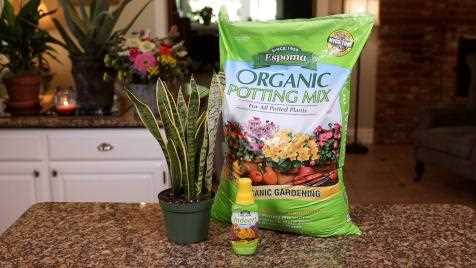
When applying fertiliser, ensure that it is distributed evenly to all parts of the plant. Concentrating the fertiliser in one area can lead to nutrient imbalances and damage to the plant. Use a watering can with a fine nozzle or a sprayer to achieve a uniform application.
4. Avoid foliage contact
To prevent foliage burn, avoid allowing the fertiliser to come into direct contact with the leaves or stems of your plants. Foliage burn can occur when fertiliser is not properly diluted or when it remains on the plant for an extended period. If any fertiliser accidentally gets on the foliage, immediately rinse it off with water.
5. Water after application
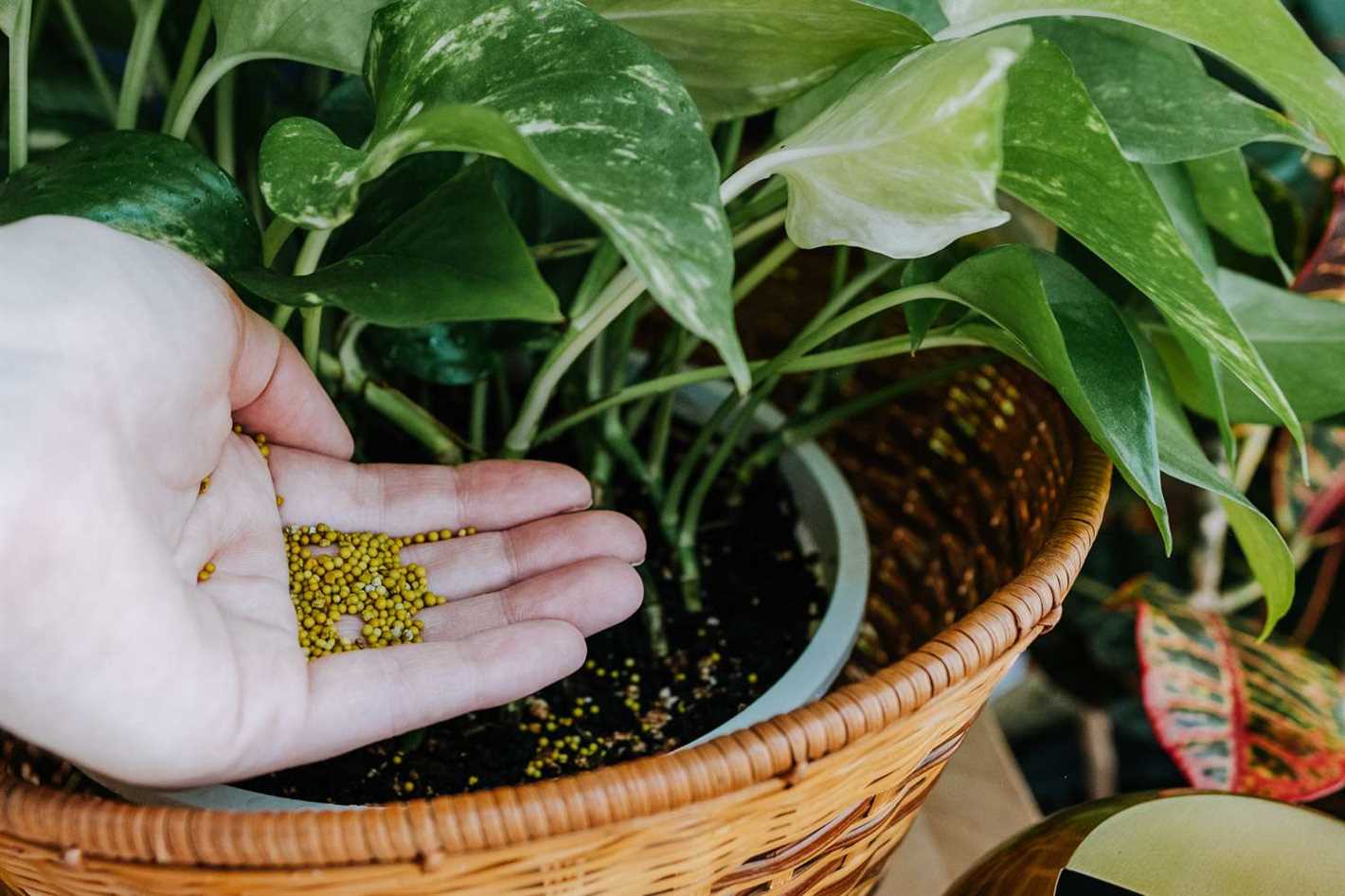
After applying fertiliser, give your plants a thorough watering to help distribute the nutrients into the soil. This will also help to flush out any excess fertiliser and prevent build-up, which can harm the roots and lead to nutrient imbalance.
6. Follow a schedule
It’s important to establish a fertilising schedule for your indoor plants. Over-fertilising can be just as harmful as under-fertilising. Follow the recommended frequency on the fertiliser packaging or consult a gardening expert to determine the best schedule for your specific plants.
7. Monitor your plants
Regularly monitor your indoor plants for signs of over-fertilisation or nutrient deficiency. Look for symptoms such as burnt or yellowing foliage, stunted growth, or an excessive build-up of salts on the soil surface. Adjust your fertilising routine accordingly based on the condition of your plants.
By following these proper techniques for applying fertiliser to your indoor plants, you can help them thrive and achieve optimal growth and beauty. Remember to always carefully read and follow the instructions provided by the fertiliser manufacturer to ensure the best results for your plants.
Signs of Over- and Under-Fertilising Indoor Plants
Fertilising indoor plants is essential for their growth and health. However, it is important to understand the signs of over- and under-fertilising to ensure you are providing the right nutrients in the correct quantities.
Signs of Over-Fertilising
- Leaf Burn: Over-fertilising can cause the tips and edges of the plant’s leaves to turn brown or yellow.
- Wilting: The excess salts and chemicals in the fertiliser can draw moisture out of the plant, causing wilting even when the soil is moist.
- Stunted Growth: Instead of promoting healthy growth, over-fertilising can actually inhibit the plant’s growth and lead to smaller leaves or plants.
- Buildup of Salt: Over time, over-fertilising can cause a buildup of salt in the soil, which can lead to nutrient imbalances and root damage.
- Leaf Drop: If your plant starts dropping leaves, it may be a sign of over-fertilising. This can happen when the excess nutrients cause stress to the plant.
Signs of Under-Fertilising
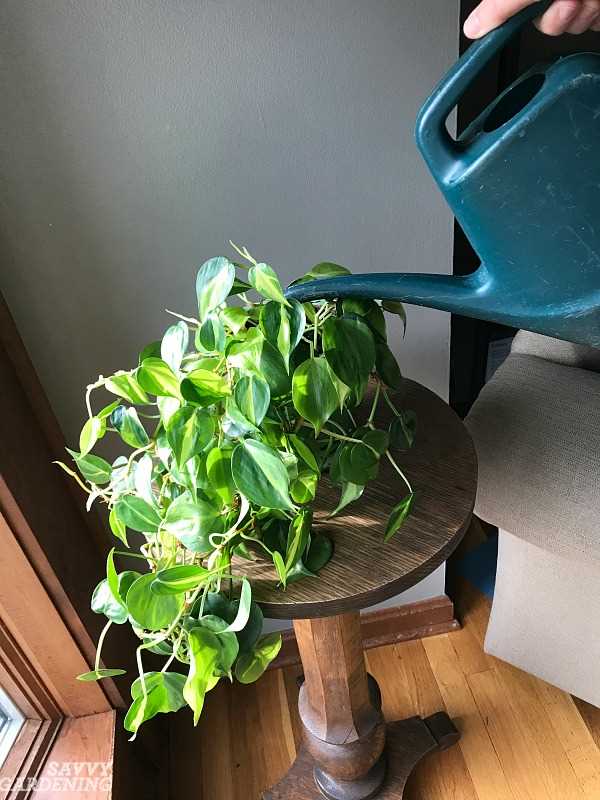
- Pale Leaves: When indoor plants lack proper nutrients, their leaves may appear pale or yellowish, indicating a lack of chlorophyll.
- Slow Growth: The growth rate of under-fertilised plants is often slow. You may notice that your plants aren’t reaching their full potential or are taking longer to produce new leaves.
- Small Leaves: Inadequate fertilisation can result in smaller leaves than what is typical for the plant species.
- Poor Flowering and Fruit Development: Under-fertilised plants may have limited or no flowers or fruits, as they require adequate nutrients to produce these reproductive structures.
- Weakened Immune System: When plants lack necessary nutrients, their immune systems can become weakened, making them more susceptible to diseases and pests.
To avoid over- or under-fertilising, always follow the instructions on the fertiliser packaging and monitor your plants closely for any signs of nutrient deficiencies or excesses.
Troubleshooting Common Fertilising Problems with Indoor Plants
- Yellowing or Browning Leaves: If you notice that the leaves of your indoor plants are turning yellow or brown, it may be a sign of nutrient deficiencies or nutrient burn. Check the pH level of the soil to ensure it is within the optimal range for your plant’s needs. Adjust the fertiliser application accordingly and consider using a slow-release or organic fertiliser to prevent over-fertilisation.
- Wilting or Drooping Plants: Wilting or drooping plants can be a sign of both over-fertilisation and under-fertilisation. Assess the soil moisture level and adjust the watering schedule accordingly. If the soil is dry, water the plants thoroughly. If the soil is consistently wet, reduce the frequency of watering and flush out any excess nutrients.
- Stunted Growth: If your indoor plants are not growing as expected or are exhibiting slow growth, it may be due to a lack of nutrients. Consider adding a balanced fertiliser to provide the necessary nutrients for healthy growth. Ensure that the fertiliser is applied according to the recommended dosage, as over-fertilisation can also lead to stunted growth.
- Leaf Burn: Leaf burn is a common issue when too much fertiliser is applied or when the fertiliser comes into direct contact with the leaves. Avoid applying fertiliser directly to the foliage and always follow the instructions provided by the manufacturer. If leaf burn occurs, rinse the affected area with water and adjust the fertiliser application to prevent further damage.
- Nutrient Deficiencies: Nutrient deficiencies can manifest in different ways, such as discoloured leaves, poor flowering, or weak stems. Consult a plant nutrient deficiency chart to identify the specific nutrient lacking in your indoor plants. Adjust the fertiliser application accordingly to address the deficiency and promote healthy growth.
Remember that proper fertilisation is essential for the overall health and well-being of your indoor plants. Regularly monitor their growth and appearance to identify any fertilising problems early on. By troubleshooting and addressing these issues promptly, you can ensure that your indoor plants thrive and flourish.
Alternative Methods for Nourishing Indoor Plants
In addition to traditional fertilisers, there are several alternative methods you can use to nourish your indoor plants. These methods can be especially useful if you are looking for organic or more sustainable options.
1. Compost
Composting is a great way to create nutrient-rich soil for your indoor plants. You can make your own compost by collecting kitchen scraps, yard waste, and other organic materials. Once the compost is ready, mix it into the soil or use it as a top dressing around your plants.
2. Vermicomposting
Vermicomposting is a type of composting that involves using worms to break down organic matter. You can set up a worm bin in your home and feed the worms with food waste. The worms will produce nutrient-rich castings, also known as worm poop, which can be used as a natural fertiliser for your indoor plants.
3. Liquid fertilisers
If you prefer to use liquid fertilisers, there are natural options available. For example, you can make a compost tea by steeping compost in water and then using the liquid to water your plants. Another option is to use seaweed extract, which is high in essential nutrients and can be diluted in water before applying to your plants.
4. Organic soil amendments
Instead of using traditional fertilisers, you can incorporate organic soil amendments into your potting mix. Examples of organic soil amendments include coconut coir, worm castings, and ground-up eggshells. These amendments can improve the overall nutrient content and moisture retention of your soil.
5. Plant-based fertilisers
There are several plant-based fertilisers available on the market, made from ingredients such as alfalfa meal, soybean meal, and cottonseed meal. These fertilisers provide a slow-release source of nutrients for your indoor plants and are often produced in an environmentally friendly way.
6. Homemade fertilisers
If you enjoy DIY projects, you can try making your own homemade fertilisers. For example, banana peels can be dried and ground up to create a potassium-rich fertiliser. Alternatively, you can use coffee grounds as a source of nitrogen for your plants. Just be sure to research the specific requirements of your plants before using homemade fertilisers.
By incorporating these alternative methods into your plant care routine, you can provide your indoor plants with the nutrients they need while also being mindful of the environment.
Q&A:
What kind of fertiliser should I use for my indoor plants?
There are different types of fertilisers available for indoor plants, including liquid fertilisers, slow-release granules, and organic fertilisers. It is important to choose a fertiliser that is specifically formulated for indoor plants and follow the instructions on the label.
How often should I fertilise my indoor plants?
The frequency of fertilising indoor plants depends on the specific type of plant and the type of fertiliser being used. In general, most indoor plants benefit from being fertilised every 2-4 weeks during the growing season (spring and summer), while some plants may require less frequent fertilising.
What are the signs that my indoor plants need fertilising?
Some common signs that your indoor plants need fertilising include slow or stunted growth, yellowing leaves, and a general lack of vitality. However, it is important to note that these symptoms can also be caused by other factors such as overwatering or inadequate lighting.
Can I use the same fertiliser for all my indoor plants?
While some indoor plants can tolerate the same fertiliser, it is generally recommended to use different fertilisers for different types of plants. This is because different plants have different nutrient requirements, and using the wrong fertiliser can potentially harm or kill your plants.
Can I use homemade fertilisers for my indoor plants?
Yes, you can use homemade fertilisers for your indoor plants. Some common homemade fertilisers include compost tea, banana peel water, and eggshell water. However, it is important to ensure that these homemade fertilisers are properly diluted and used in moderation to avoid damaging your plants.
What are the benefits of fertilising indoor plants?
Fertilising indoor plants provides essential nutrients that they may not receive from the soil alone. This helps promote healthy growth, vibrant foliage, and better resistance to pests and diseases. Additionally, fertilising can also improve the overall appearance and vitality of your indoor plants.
Are there any risks or dangers associated with over-fertilising indoor plants?
Yes, over-fertilising indoor plants can be harmful and potentially fatal to them. Excessive amounts of nutrients can burn the roots, cause nutrient imbalances, and lead to the accumulation of salts in the soil. This can result in the wilting or death of your indoor plants. It is important to carefully follow the recommended dosage on the fertiliser packaging and avoid over-fertilising.
Video:
This Fertilizer Is My SECRET WEAPON For A Healthy Productive Garden!







